A northern spain travel itinerary is one of the most spectacular road trips you can take in Spain. Northern Spain is a region full of scenic highlights. The sea here is usually very rough, the cliffs very steep and yet the landscape here is characterized by dense forests and green meadows. It rains quite a lot, at least much more than in the more popular region of Andalusia in the south of Spain. Northern Spain has so far been spared from mass tourism, so you rarely see foreign license plates along the way.
This is somewhat surprising, as northern Spain is not short of spectacular sights. In addition to the rugged coastline, there are beautiful beaches that are reminiscent of the beaches of the Algarve in Portugal. There is also a high mountain range right on the coast where you will feel like you are in South Tyrol. And the most striking highlight, which you wouldn’t expect to find here, is an arid desert that reminded us strongly of the Atacama Desert in Chile.
We’ll now tell you the best way to pack all these northern Spain highlights into a two-week itinerary and what important tips we have for your northern Spain road trip.
Northern Spain Road Trip Itinerary – Overview
The itinerary for our northern Spain road trip is clearly based on the natural must sees of northern Spain and the most beautiful scenic sights. We have largely left out cities, partly because we are more nature than city types and partly because there are only a few cities in northern Spain that we think are really worth seeing. Exceptions, such as San Sebastian, prove the rule here.
Our route starts in the east of northern Spain in San Sebastian and ends in the west in Santiago de Compostela. The route can therefore be used to travel to Portugal and discover the highlights of Portugal on a road trip.
Northern Spain Road Trip Day 1 | San Sebastian
We start our northern Spain travel itinerary in the north-east of Spain on the border with France, where a very special city awaits you.
Although we are not really city people and prefer to be out in nature rather than in civilization, San Sebastian totally blew us away. Our northern Spain travel guide said it was the “most beautiful city in the world” and although we tend to have an aversion to such exaggerations, we wanted to give the city a chance. And what can we say, it was really worth it.
The old town of San Sebastian is super small, but also really worth seeing. There are medieval walls, beautiful churches, authentic restaurants and lots of charm. There is also a great city beach framed by Concha Bay. You can climb the hills that rise up on both sides of Concha Bay and enjoy a wonderful view of the sea and the old town from the top.
Day 2 | Bardenas Reales
The highlight of today’s northern Spain travel itinerary is about 2 hours south of San Sebastian. And you will hardly believe your eyes when you see this area for the first time. And you will hardly meet any other people here, because the Bardenas Reales is a little insider tip in northern Spain.
The spectacular Bardenas Reales is a rugged and inhospitable desert in the Navarra region and is located some distance from the coast of northern Spain, but is still worth the long journey.
The desert is a spectacular highlight in northern Spain and should not be missed on any northern Spain travel itinerary.
The Bardenas Reales consists largely of bizarre, ochre-colored clay landscapes spread over several hundred square kilometers. Sometimes you feel like you’re in the American Grand Canyon, although everything is much smaller here.
The semi-desert Bardenas Reales de Navarra covers over 400 km² and is therefore roughly the size of Cologne. You can drive through it in half a day and see landscapes that you wouldn’t expect.
Find out more about this incredible desert here:
Day 3 | Bilbao
Bilbao is not the most beautiful city in Spain, but as it is on the route of a northern Spain round trip, it is still a good stop. It will take you just under 2.5 hours to get from the Bardenas Reales desert back to the coast.
Bilbao is actually an industrial and port city but is still visited by many tourists. This is because it is home to the world-famous Guggenheim Museum. Its exterior is the real highlight for many, but inside it houses some famous modern and contemporary works of art. The museum is absolutely worth a visit for art lovers.
If you are more interested in architecture or technology, we can recommend a very special ferry, which is actually a bridge. The Puente de Vizcaya (Vizcaya Bridge) was inaugurated on July 18, 1893, making it the oldest floating ferry in the world.
The special thing about it is that you are pulled across the Nervion River on a platform. The platform is suspended from a 45 high bridge that spans 160 meters across the river. You can cross the river in your car for just a few euros. You can also reach the upper part of the bridge by elevator and cross the structure on foot.
Day 4-5 | Picos de Europa
On your northern Spain road trip today, you will continue along the coast and pass Santander. The city itself is not really worth seeing, but it has an impressive coastline to offer. Here you can walk for miles along the sea and climb over the rugged cliffs.
It is best to park behind the soccer pitch on a large meadow (Google Maps) and set off from there. There are great views for several kilometers in both directions.
About an hour further on is one of the most impressive national parks in Spain. The Picos de Europa (in the national park of the same name) are a high mountain range on the coast of northern Spain and totally remind us of the Dolomites in South Tyrol. The mountain massifs are over 2000 meters high and there are many opportunities to hike and discover the fantastic mountain world.
One hike in particular is considered one of the most beautiful ones in Spain and is definitely the most spectacular in the Picos de Europa. On the Ruta del Cares, you hike over 11 km along a gorge that is only a few meters wide in places.
But there is also plenty else to discover. Beautiful mountain lakes in picture-book scenery, authentic mountain villages and narrow serpentines that wind their way up the mountains.
- More about the Picos de Europa: Picos De Europa | 6 fantastic highlights you have to see
Day 6 | Playa de las Catedrales
Today we continue along the coast for about 2 hours in a westerly direction. On the way, you will pass the beautiful Silence Beach. Although there are hardly any parking spaces and pebbles instead of sand, the beach is still well worth a visit. But today’s destination is even more impressive.
Playa de Catedrales is probably the most spectacular beach in northern Spain and probably in the whole of Spain. This beach should definitely not be missed on your northern Spain road trip.
The beauty of Playa de Catredales is due to the numerous rocks and arch-like rock formations on the beach and the fact that almost the entire beach is under water at high tide. This means you can only visit the beach and the crazy rock formations at low tide.
Because it is so beautiful, you are of course never alone on the beach. Playa de Catedrales is extremely popular and always well frequented. As a result, you even have to buy limited tickets to visit the beach in high season.
You can find out where to park at Playa de Catedrales, where to get tickets and everything else you need to know here:
Day 7 | Cova da Doncella
About an hour to the west, right by the sea, lies a wonderful little attraction. The Cova de Doncella is a small but beautiful cave right on a steep cliff in the Galicia region. The way down here is not easy to find. You have to park in this parking lot (Google Maps) and then walk about 500 meters through a beautiful dense forest. When you reach the cliff, turn right onto a small path and after a few meters you will find yourself in front of the small cave entrance.
You will almost have to crawl to get through, but at the end you will be rewarded with a fantastic view. You can also walk around on the narrow rock that you can see from the cave opening.
There is also a beautiful beach right next door, which is not within walking distance, but can at least be reached by car in a few minutes. Praia Abrela offers a very wide sandy beach with gently sloping waters. There are picnic tables and a beach bar in summer. Unfortunately, dogs are not allowed.
Day 8 | Cabo Ortegal & Sierra de la Capelada
Cabo Ortegal is a cape on the north coast of Galicia and a very special highlight in northern Spain. There is a lighthouse, which was built in the 1980s and protects shipping from the steep cliffs and numerous rocks in the water in the often very rough sea.
The view from this small cape is truly indescribably beautiful. You look out over the numerous rocks that rise out of the sea in front of you and on which thousands of seabirds nest.
To the southwest of the cape is the Serra da Capelada with its numerous steep cliffs, which look really fantastic from Cabo Ortegal.
The Serra da Capelada is a 20 km long mountain range in Galicia and, at 620 meters, is the highest elevation in south-western Europe. The cliffs drop steeply down to the sea and offer an impressive spectacle with the rugged coastline and rough sea.
The road winds here at some distance from the coast over the numerous hills and through many tight bends along wind farms and great nature and always offers beautiful viewpoints of the coast.
Fun fact: There are free-roaming horses and herds of cattle throughout the Serra da Capelada, which can sometimes be right on the road. So be sure to drive carefully here.
Day 9 | Santiago de Compostela
The destination of our route through northern Spain is a very well-known city in the northwest of Spain. Santiago de Compostela is known as the destination of the Way of St. James. But even if you are not interested in pilgrimage, this city in the far west of northern Spain is well worth a visit.
The highlight of Santiago is certainly the large square in front of the cathedral, where all the pilgrims arrive after a long journey and celebrate the end of their journey. No matter when you arrive here, you will definitely see some happy pilgrims on the floor of the cathedral square.
But even apart from that, the old town of Santiago de Compostela is very beautiful and invites you to take a long stroll through the city.
The most beautiful beaches in northern Spain
Northern Spain not only has spectacular cliffs and rocky coasts to offer, but also beautiful beaches that reminded us of the Algarve. For a list of the most beautiful beaches in northern Spain, just take a look here:
Northern Spain Road Trip | The Best Travel Tips
There are regional official languages in Northern Spain
In the northern Spanish regions of Galicia, Navarre, the Basque Country, Cantabria and Asturias, there are regional dialects in addition to Spanish that some people learned at school.
These dialects are official languages and so place names and other designations on signs are always described in two languages. This can sometimes be confusing, as some dialects have nothing to do with Castilian Spanish, which is the official national language.
How many days should you plan for a tour of northern Spain?
We recommend planning at least one week for a tour of Northern Spain. However, it is also no problem to stay in this region for 2 weeks or even longer. In addition to the rugged coastal landscape, there are also wonderful beaches where you can relax in summer.

Northern Spain – The best time to visit
Northern Spain is much harsher than, for example, the Andalusia region in the south. The weather is correspondingly less appealing. It rains much more here and the hours of sunshine cannot be compared with the sun-drenched regions in southern Spain. The Spanish Atlantic coast is even considered the rainiest region in Spain. As a result, you should be prepared for a lot of rain here.
The main season is the summer months of July and August. Here you have the best chance of good weather with around 25 degrees. However, this is also when most of the other tourists are out and about. We therefore also recommend the low season with the months of May/June and September. However, it is a little cooler here and swimming in the sea is not always pleasant.
How much does a round trip to northern Spain cost?
Prices in Spain are generally comparable to those in Germany, but tend to be slightly lower. You pay a little less than in Germany, especially in supermarkets.
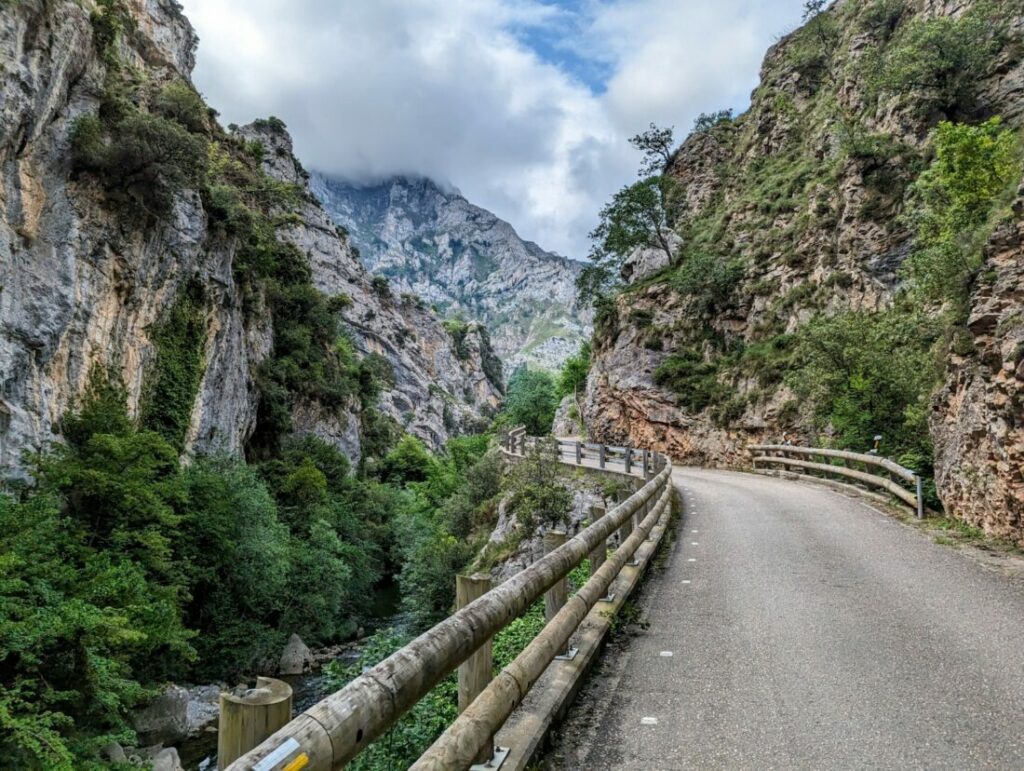
Is northern Spain very touristy?
In contrast to Andalusia or the Algarve in Portugal, northern Spain is not touristy at all. Most of the tourists you will meet are locals or French. The north of Spain is not really on the agenda for Germans. If at all, then as a transit region on the way to Portugal.
Of course, it can still get quite crowded at the tourist hotspots in summer. In general, however, the region is far from being overrun by mass tourism.
Northern Spain Camping | Is Northern Spain suitable for camping?
Northern Spain is perfect for vanlife and a round trip in a motorhome. There are many great opportunities for free-standing and wild camping in the countryside. We have summarized all the information you need for camping in northern Spain in a separate article.
We hope you enjoyed our route and our tips for a round trip to Northern Spain. If you have any questions, please write us a comment!






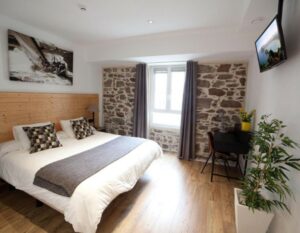 Casa Nicolasa
Casa Nicolasa


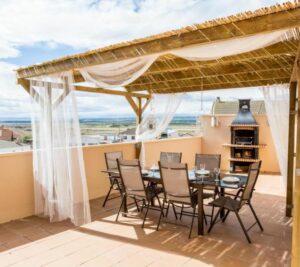 Apartamento Ático Bardenas
Apartamento Ático Bardenas
 Gran Hotel Domine Bilbao
Gran Hotel Domine Bilbao



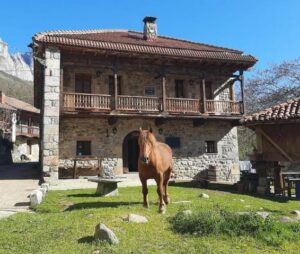 La Casa Vieja en Valdeón
La Casa Vieja en Valdeón


 Hotel Balcón de San Bartolo
Hotel Balcón de San Bartolo



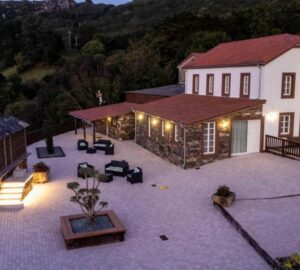 Casa Rural San Andrés de Teixido
Casa Rural San Andrés de Teixido





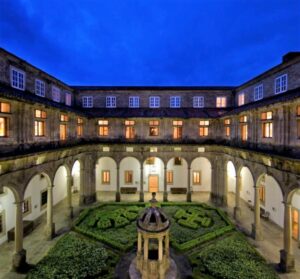 Hostal Reis Catolicos
Hostal Reis Catolicos






